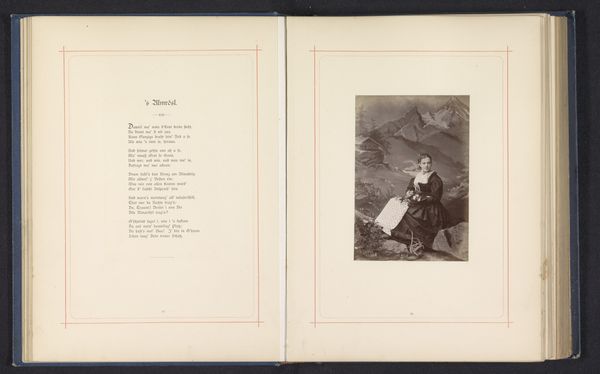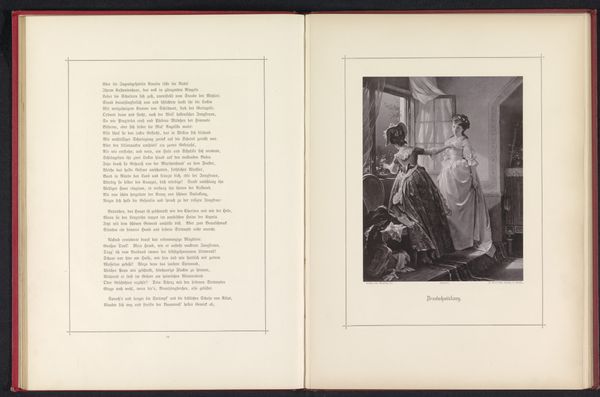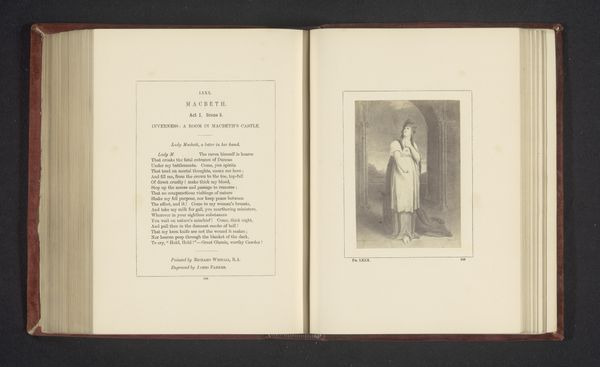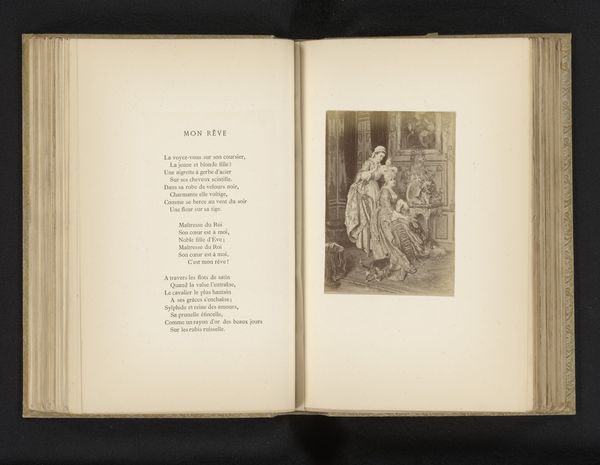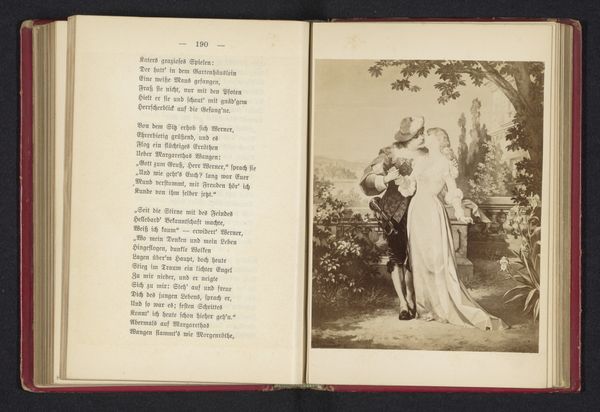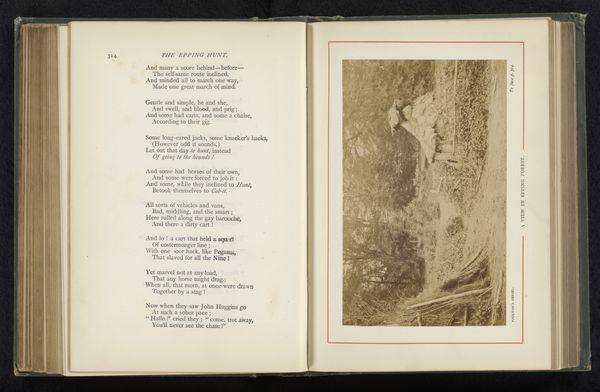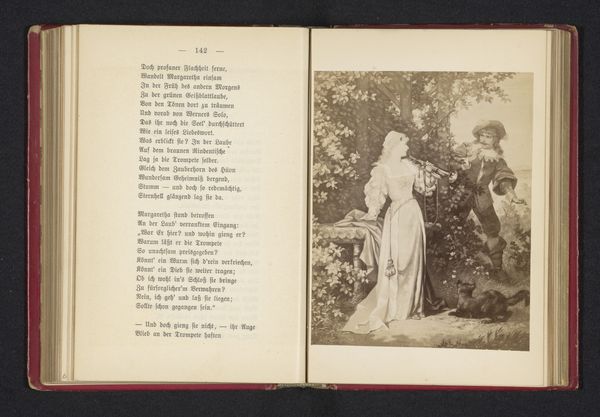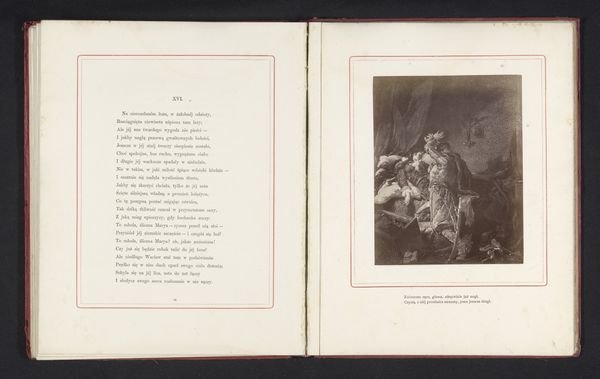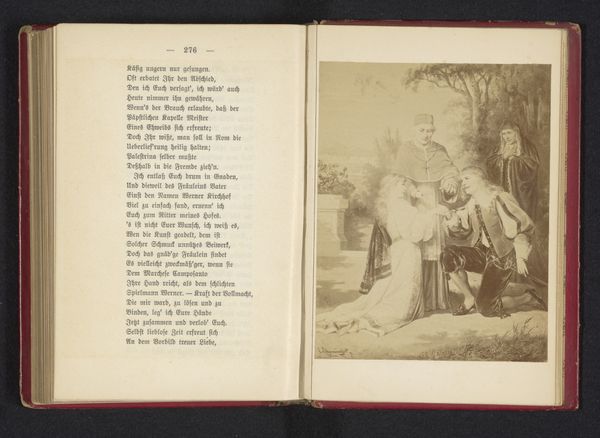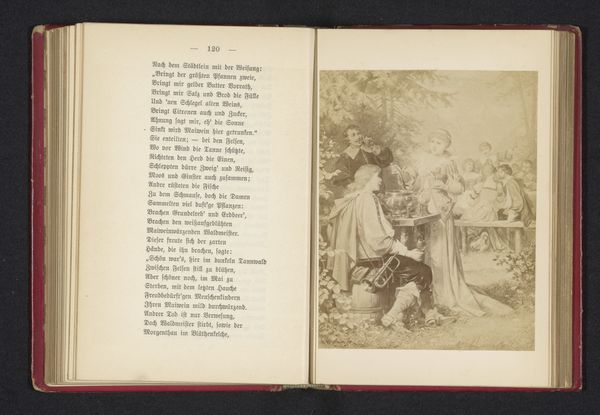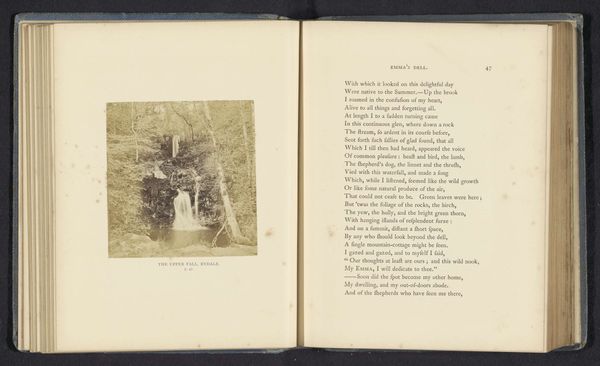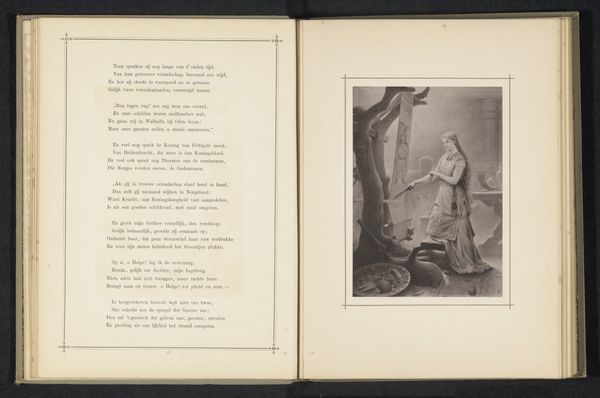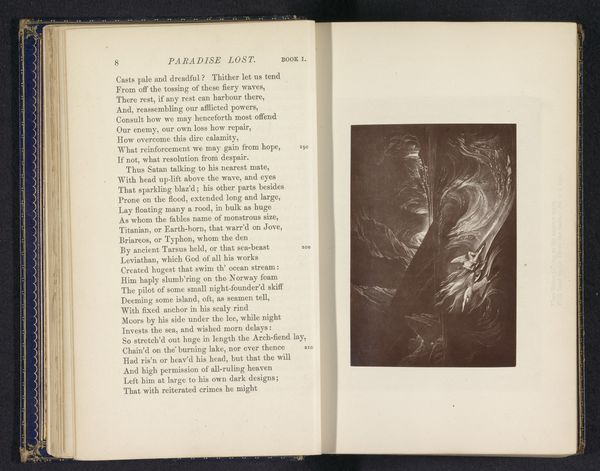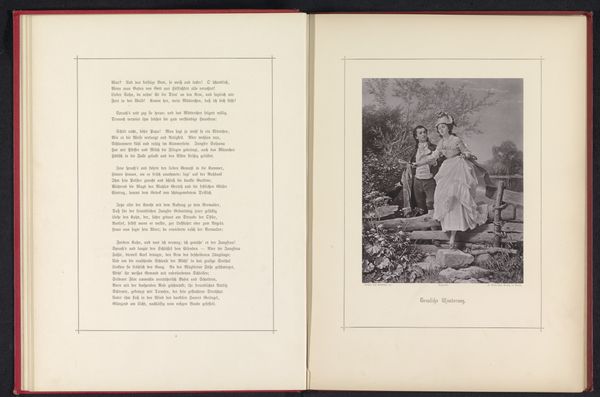
Dimensions: height 133 mm, width 110 mm
Copyright: Rijks Museum: Open Domain
Curator: Before us we have a photographic reproduction of Richard Redgrave’s painting of Ophelia, created before 1873. This gelatin silver print captures the tragic Shakespearean character in a landscape setting. Editor: Wow, there’s a haunting stillness in her gaze. It’s as if time stopped, capturing her in this liminal space between life and death. Curator: It's interesting to consider how photographic reproduction influenced the perception of paintings during this period. Photography made art accessible, spreading narratives but also potentially altering the original artwork's aura. Redgrave was known for paintings dealing with difficult social issues, in this instance through literature. Editor: Absolutely. Looking at the texture, it makes me wonder about the original painting itself – the layers of paint, the artist's touch. I get the sense Redgrave was fascinated with Ophelia; her delicate presence against that brooding landscape tells a much bigger story. Is that grief I see there or the romanticism of suicide? Curator: Certainly a convergence of both, which speaks to the Victorian fascination with melancholic heroines. Ophelia, as a character, offered artists a vehicle to explore themes of madness, female vulnerability, and the power of nature. Editor: And you can see this is just as potent within the photography. Looking closer, the textures of her gown against the almost ominous darks in the background make me feel something about all the expectations placed upon young women then - or perhaps even now. A quiet gasp for liberation that’s been visually paused. Curator: Yes, absolutely; such images were very influential during the Romantic era when ideals regarding female submission and restraint had very public roles. It reminds me of the discourse about the Pre-Raphaelites too, who used very similar compositions, especially paintings by Millais of the same subject matter. Editor: It certainly stays with you, this image of Ophelia caught between worlds. Curator: Indeed, this work helps us examine the intertwined relationship between art, literature, and photography. It challenges us to consider how stories are reshaped across media.
Comments
No comments
Be the first to comment and join the conversation on the ultimate creative platform.
